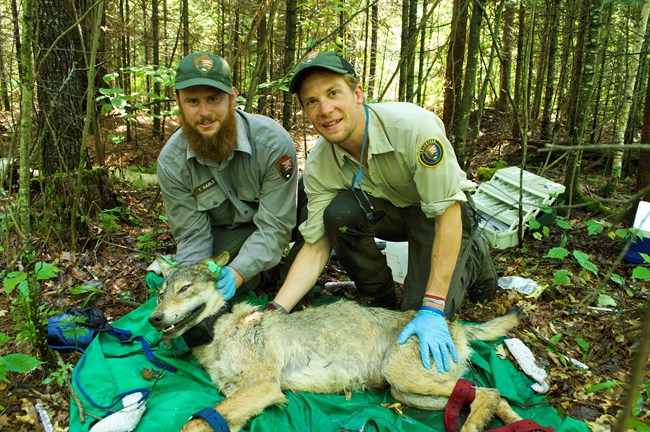
NPS photo
To better understand wolf predation on these animals, in 2016, Windels enlisted the help of interns Austin Homkes and Tom Gable, both graduate students at the time at Northern Michigan University. The team captured wolves using foothold traps and fit them with a global positioning system (GPS) telemetry collars. They documented kill site characteristics and wolf movements before, during, and after the kills using the high intensity (locations every 20 min) GPS collar data. From April to November of 2016, they documented 96 total kill sites. The researchers conducted white-tailed deer pellet counts to estimate the relative abundance of deer in the area, and conducted aerial surveys to estimate abundance of beaver and moose populations. This information will contribute to an understanding of wolf predation rates on these alternative prey species and will also help managers understand the bigger picture of the effects of wolves on at-risk moose populations.
Last updated: September 15, 2018
